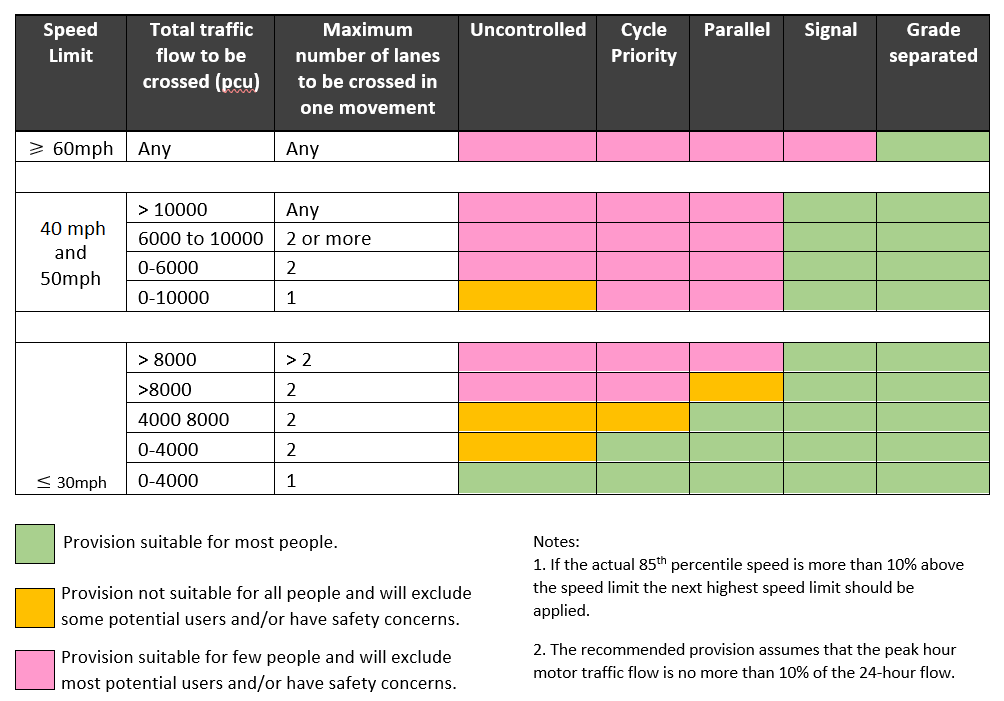Strategy behind the Standard
The parallel crossing is similar in form and application to a zebra crossing, but with a separate parallel cycle crossing alongside the zebra crossing. Drivers must give way to pedestrians and cyclists using the crossing. It provides a more demand responsive and lower cost solution compared to signalised facilities. Parallel crossings can be used on links and on the arms of priority-controlled and roundabout junctions.
Parallel crossings provide a legal priority to pedestrians and cyclists. The use of globes and zig-zag markings enhances the visibility of the crossing to drivers, compared to a cycle priority crossing. They are therefore more suitable at sites with higher traffic flows and speeds
Councillor Kevin Bentley, Essex County Council Leader said: “If we are to limit congestion, keep people and local goods deliveries moving while reducing pollution, then we have to promote cycling. Part of that effort is making cycling more efficient and safer and so a more attractive option. Parallel crossings will help, while also sending a clear signal that we will continue to grow cycling in Essex.”

Best Practice Guidance to be used by Essex Highways
ECC Recommendations for use
In Essex, Parallel crossings should only be put in if there is a road between 2 cycle routes, whether planned or already existing.
According to table 10-2 (also see: Crossings and below) in LTN 1/20, Parallel Crossings should be considered if the road on which it will go has a speed limit less than or equal to 30mph, a two-way AADT less than 8000 vehicles, and with 2 or fewer lanes to be crossed in one go.
As with zebra crossings, parallel crossings may be divided into two parts by a central refuge or median. This is likely to improve the ease of use of the crossing for both pedestrians and cyclists as they only need to watch for oncoming traffic in one direction
Should the Parallel crossing prove to be the preferred option, please use TSRGD 2016: Schedule 14 Part 2 Item 53 (Diagram 1001.5) to find the design specifications.
Examples of Best Practice in Essex
Chester Hall Ln, Basildon
Hamstel Rd, Harlow
Victoria Rd. South, Chelmsford

